How to clean your sensor Page 4
 Cleaning Solutions!
Cleaning Solutions!
When it comes to ridding your CCD or CMOS sensor of dust and debris there are two methods – ‘dry cleaning’ and ‘wet cleaning’.
Dry cleaning a sensor is the simplest option, and can be the safest too, as in many cases it doesn’t involve coming into contact with the sensor’s surface. However, it generally only deals with dust held on with static (which accounts for maybe 90% of dust) and anything stuck to the sensor with moisture will need to be cleaned using the ‘wet’ method.
Using both systems is the most effective way of keeping your sensor spick and span – using the dry cleaning system most of the time and the wet method only when required. Here’s a selection of the most popular solutions on the market, though it’s by no means comprehensive:
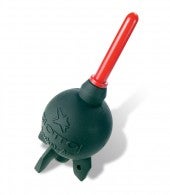 Giottos Rocket – Air
Giottos Rocket – Air
Web: www.giottos.com
The Giottos Rocket-Air is basically a rubber ‘blower’ bulb with a rigid plastic proboscis. Available in a variety of sizes, you can get the ‘probe’ close to your sensor, while the manually operated bulb is low-powered enough not to cause harm, yet can still set the dust free. The Rocket-Air is one of the safest and simplest dry cleaning solutions and independent tests have found that it expels fewer contaminates than similar products.
GOOD: Low price, no contact with sensor, easy to use
BAD: Doesn’t trap dust, just blows it around
LensPen SensorKlear Pro Kit
Web: www.lenspen.com
A complete dry-cleaning sy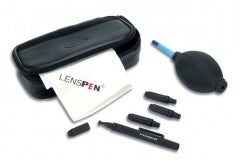 stem, this kit comprises a Rocket-Air style rubber blower, a SensorKlear pen (with 3 spare tips) and a microfibre suede cloth for cleaning the camera housing. The SensorKlear pen has a pad on the end that’s impregnated with a dry, ‘patented cleaning compound’. Just wipe the surface of your sensor with the cleaning tool and even stubborn dust is gone.
stem, this kit comprises a Rocket-Air style rubber blower, a SensorKlear pen (with 3 spare tips) and a microfibre suede cloth for cleaning the camera housing. The SensorKlear pen has a pad on the end that’s impregnated with a dry, ‘patented cleaning compound’. Just wipe the surface of your sensor with the cleaning tool and even stubborn dust is gone.
GOOD: Dry cleaning tools in kit, contact cleaning without liquid
BAD: Re-use same pen and can’t clean
Photographic Solutions’ Eclipse fluid
Web: www.photosol.com
If 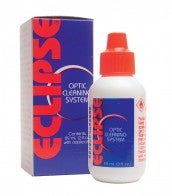 you’re going to give your sensor a ‘wet’ clean then you’re going to need some sort of cleaning fluid, and washing-up liquid just isn’t the thing to use to cut through sensor grime.
you’re going to give your sensor a ‘wet’ clean then you’re going to need some sort of cleaning fluid, and washing-up liquid just isn’t the thing to use to cut through sensor grime.
Photographic Solutions’ Eclipse fluid is by far the leading product on the market, and the only fluid that is actually recommended by any camera manufacturer (including Fuji and Leica). The reason for this is that Eclipse contains less than 5 parts per million (ppm) of contamination that would leave a residue on the sensor as it dries. It also dries instantly, so cleans your sensor and ‘disappears’. Eclipse is recommended for use with Sensor Swabs.
GOOD: Manufacturer endorsed, ‘pure’ cleaning solution
BAD: Care needed to avoid using too much liquid
Tetenal Anti-dust Mini
Web: www.tetenal.co.uk
 Normally, canned or compressed air is a definite ‘no go’ for sensor cleaning, because the freezing liquid propellant can easily squirt from the can onto your delicate digital sensor. Tetenal’s Anti-dust Mini doesn’t have a liquid propellant, so you can blow the dust from your CCD or CMOS sensor without risk. It’s still worth holding it at a distance though, as the ‘puff’ from the canister is quite strong.
Normally, canned or compressed air is a definite ‘no go’ for sensor cleaning, because the freezing liquid propellant can easily squirt from the can onto your delicate digital sensor. Tetenal’s Anti-dust Mini doesn’t have a liquid propellant, so you can blow the dust from your CCD or CMOS sensor without risk. It’s still worth holding it at a distance though, as the ‘puff’ from the canister is quite strong.
GOOD: Easy to use, no contact with sensor
BAD: Doesn’t trap dust – just blows it around
Sensor Swab
Web: www.photosol.com
Sensor Swabs may look like nursery school glu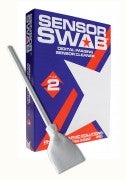 e-sticks with tissue on the end, and in essence that’s not far from the truth. However, the ‘swab’ part is incredibly important, because this is what you’ll be wiping across your sensor.
e-sticks with tissue on the end, and in essence that’s not far from the truth. However, the ‘swab’ part is incredibly important, because this is what you’ll be wiping across your sensor.
Sensor Swabs are single use items made in ‘clean room’ conditions. You need cleaning fluid to go with them but they’re the only ‘wet cleaning’ tool to come with the approval of certain manufacturers.
They come in three sizes to match the variety of CCD and CMOS sensor sizes currently available, and can be bought on their own or in a kit – often with Eclipse cleaning fluid.
GOOD: Manufacturer endorsed, single use ‘clean’ swabs
BAD: Single use swabs push price up
D-SLR Brush
www.thedustpatrol.com
Arctic Butterfly
Web: www.visibledu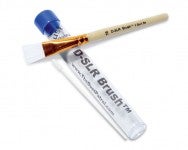 st.com
st.com
A relatively new addition to the sensor cleaner’s potential armoury is a cleaning brush that uses the natural properties of nylon. Air is blown through the nylon bristles to create a static charge and this charge attracts dust as you brush your sensor.
Of this pair, the Arctic Butterfly is the more ‘advanced’ option, in so much as an AAA battery is used to physically spin the brush and generate the static charge.
On the other hand, the DSLR Brush is essentially a ‘paintbrush’ that relies on you blowing air through it with a hand blower such as the Giottos Rocket-Air. (Simply blowing on it to generate the charge isn’t advised due to moisture in your breath). It’s significantly cheaper though, and it also comes with ‘ChamberSwabs’ for cleaning the camera chamber at the same time.
GOOD: Contact cleaning without liquid, ease of use
BAD: Re-using same brush could lead to contaminate
build-up
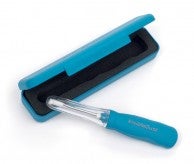
Also check out our Digital Darkroom tutorial:
Removing dust from your photos using Photoshop Elements




